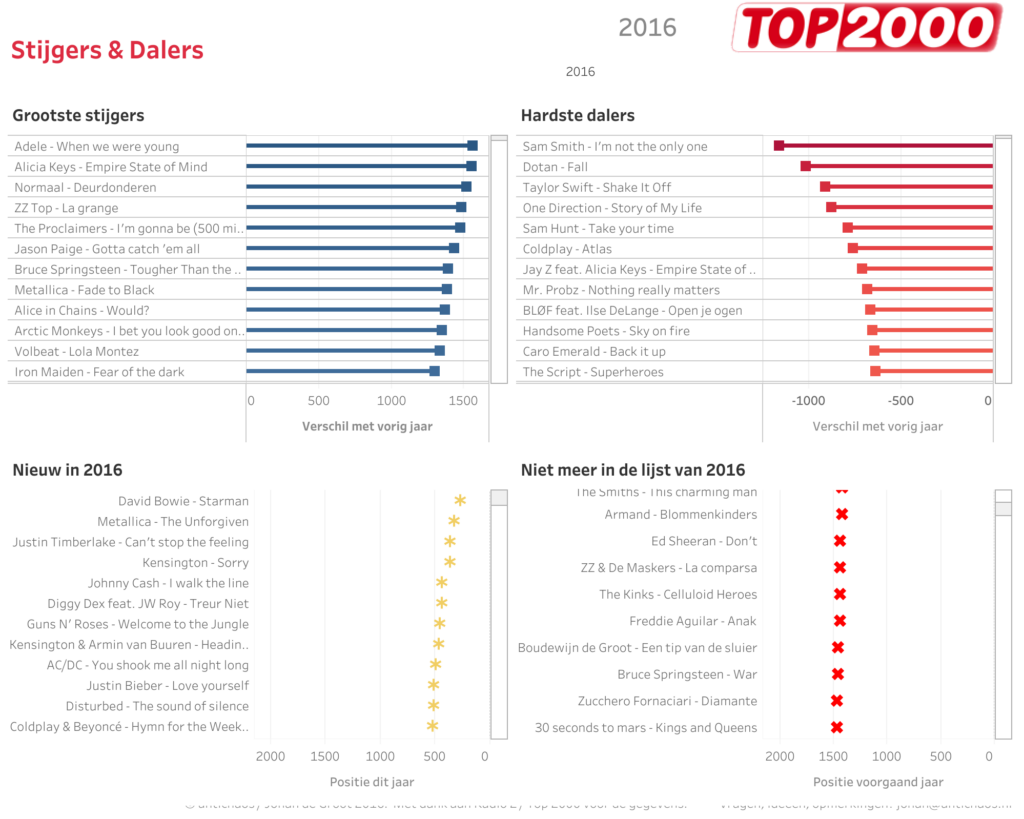Tableau can handle all kind of dates and dateformats very well – but one option is lacking: the use of ISO8601 weeknumbers, the one which is used all over the world, especially in Europe.
[Read more…] about ISO weeks in TableauAntichaos Blog
Year-to-date in Tableau
If you want to compare last year to this year ‘to date’, you have to take into account that a leap-year adds 1 extra date to the year – so you can’t just compare the day-of-year from this and last year.
Often this filter is used:
DATEPART('dayofyear',[Date]) <= DATEPART('dayofyear',TODAY())
But this is a better one, since this compares day and month:
YEAR([Date]) >= YEAR(TODAY())-1
AND (MONTH([Date]) < MONTH(TODAY())
OR
(MONTH([Date]) == MONTH(TODAY())
AND DAY([Date]) <= DAY(TODAY())))
If you want to have a ‘year to date’ until today (so today excluded), use this one:
YEAR([Date]) >= YEAR(TODAY()-1)-1
AND (MONTH([Date]) < MONTH(TODAY()-1)
OR
(MONTH([Date]) == MONTH(TODAY()-1)
AND DAY([Date]) <= DAY(TODAY()-1)))ISO weeks in Tableau
Tableau can handle all kind of dates and dateformats very well – but one option is lacking: the use of ISO8601 weeknumbers, the one which is used all over the world, especially in Europe.

Calculate last day of month
Sometimes you need to calculate how many days a certain month – like the current month. With some nested date-calculations this isn’t that hard to calculate…
[Read more…] about Calculate last day of month
